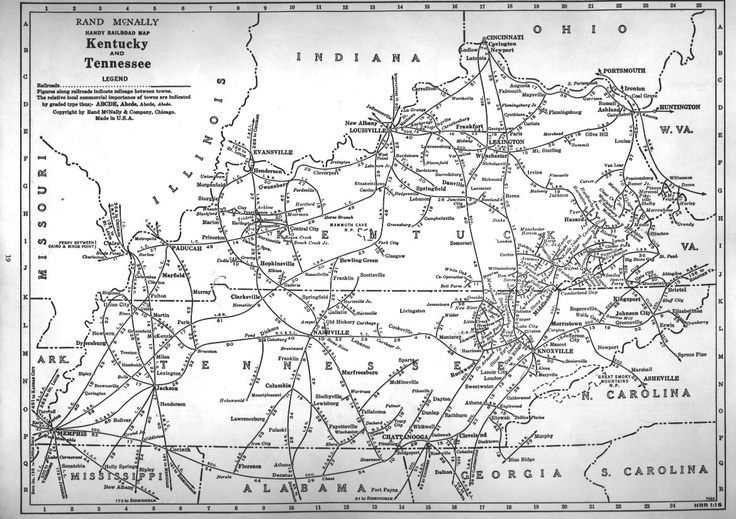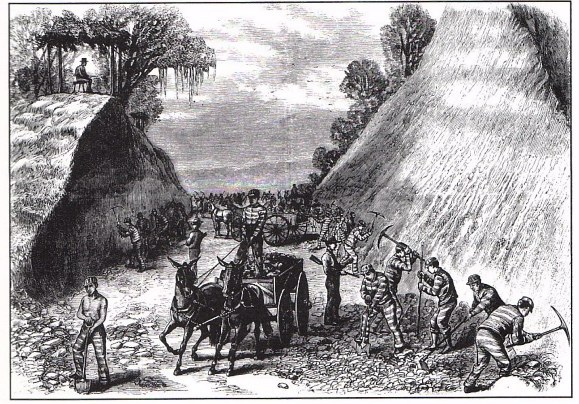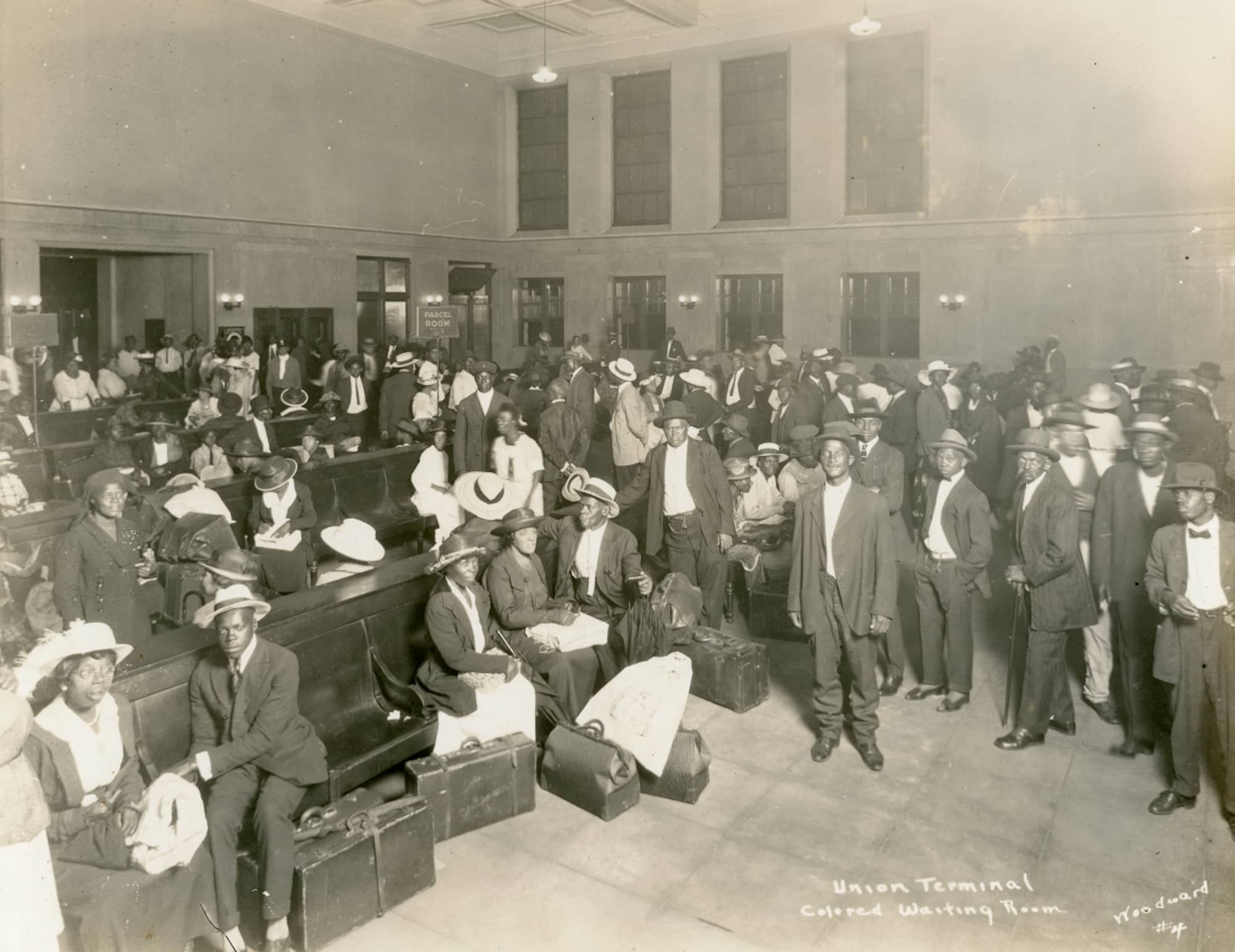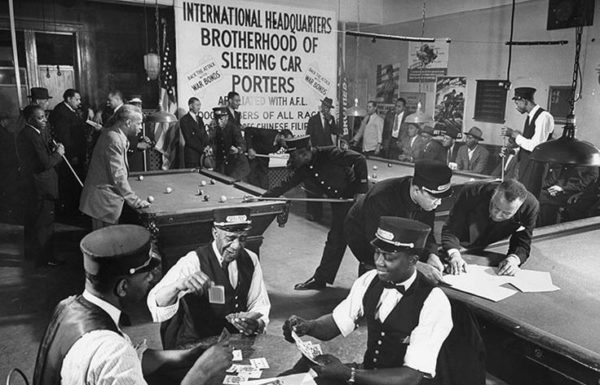
by Anna, Madison County KYPath
Kentucky and Tennessee had good railroad passenger service from the 19th century until 1968. A line ran through Cincinnati and Winchester to Atlanta and Florida, another through Cincinnati and Danville to Birmingham and New Orleans. Kentucky's first railroad was built between the 1830s and 1850s through Louisville, Frankfort, and Lexington. It eventually carried coal and people from Hazard and Whitesburg. Kentucky's second rail line was built in the 1850s from Louisville through Bowling Green to Nashville. These and other lines carried people throughout the south and across the country.

The South built some of the world's earliest railroads. Railroad corporations leased and owned enslaved people for labor. Other than the Lexington-Frankfort "Old Road" and the original Louisville & Nashville line, Kentucky's railroad was built between the end of the Civil War and the Great Depression. Over those 65 years, trains came to mean different things to different generations of black people.
In the late 1860s, hundreds of thousands of black freedmen and women traveled constantly on trains. They found scattered families, visited everywhere trains went, and looked for good work in the devastated post-war South. Some settled in the new south frontier of the Mississippi River Delta where by clearing land, they gained title to it, becoming majority landholders in the area within a generation. Others went to Birmingham to work in mines and steel mills. Black people participated in and led Birmingham's labor and unionization struggles. Thousands traveled as long as they could, stopping only to work for money to buy another ticket.
From 1871 to 1892, the Tennessee Coal, Iron and Railway Company brought trainloads of prisoners to break interracial (sometimes black-led) miner strikes in Tennessee. More than two-thirds of convict-lease laborers were black. Battles escalated over 20 years from free laborers burning stockades and putting prisoners back on the train to freeing the prisoners. Convict leasing was bitterly hated in Tennessee. It was abolished in 1896.

In the 1890s, brutal economic depression, elite fear of militant interracial farmer/worker mutual aid organizations and political parties, Northern paternalism, and Progressive concern about political corruption forged a coalition that segregated public goods. Louisiana's 1890 "Separate Car Act" was disliked by the railroads because double the rolling stock cost more to build and run. The interracial New Orleans Comité des Citoyens protested with acts of civil disobedience. In 1892, one of its riders, Homer Plessy, was arrested for riding in a white car. The 1896 supreme court decision on his case marked the beginning of the Jim Crow segregation era.
From the 1890s to the 1910s, conventions rewrote Southern state constitutions to disfranchise black people from the vote. Black mayors, congresspeople, and other elected representatives dwindled. White terrorism took black people's land and businesses. 1919, the year soldiers returned from World War I to a country ravaged by pandemic influenza, was a year of whites burning black communities across the country. In Corbin, Kentucky, the entire black population, including 200 men who built the railroad, was forced onto trains at the depot that still stands downtown. The white mob took their homes and land. For much of the 20th century, Corbin was a "sundown town" where black people could work, but not live.

When the U.S. nationalized railroads to meet World War I production needs, it made many capital improvements, established the 8-hour day, and raised wages, especially the wage of black and other low-wage rail workers. When railroads returned to private ownership in 1920, Kentucky and Tennessee railroads fired ten thousand workers and lowered wages, especially black workers' wages. Racially discriminatory pay for railroad workers was outlawed in 1944 by the supreme court, in a decision for black Alabama fireman Mr. Steele and his fellow workers against the Louisville and Nashville Railroad.
Between 1910 and 1970, the railroads carried the great migration of six million black people north to industrial cities like Pittsburgh, Detroit, and Chicago. Many whites also migrated north. Passenger trains were a major means by which people returned for regular visits with extended family in the South.

In 1925 the largest black-led union in U.S. history was founded, the Brotherhood of Sleeping Car Porters. Pullman coach porters, maids, and dining car staff were a largely black workforce. The union won black workers independence to negotiate with the company. Wage increases produced a black mass middle class, much larger than the "talented tenth" of preachers, undertakers, and hairdressers. The union led desegregation of the high-wage defense industry and the armed forces during World War II. Passenger trains were desegregated in the 1950s. The union represented its members until railroad passenger service was largely discontinued in the late 1960s.

As essential as highways and internet, Kentucky and Tennessee's passenger rail were central to a hundred years of black freedom, family, work, conflict, and daily life.